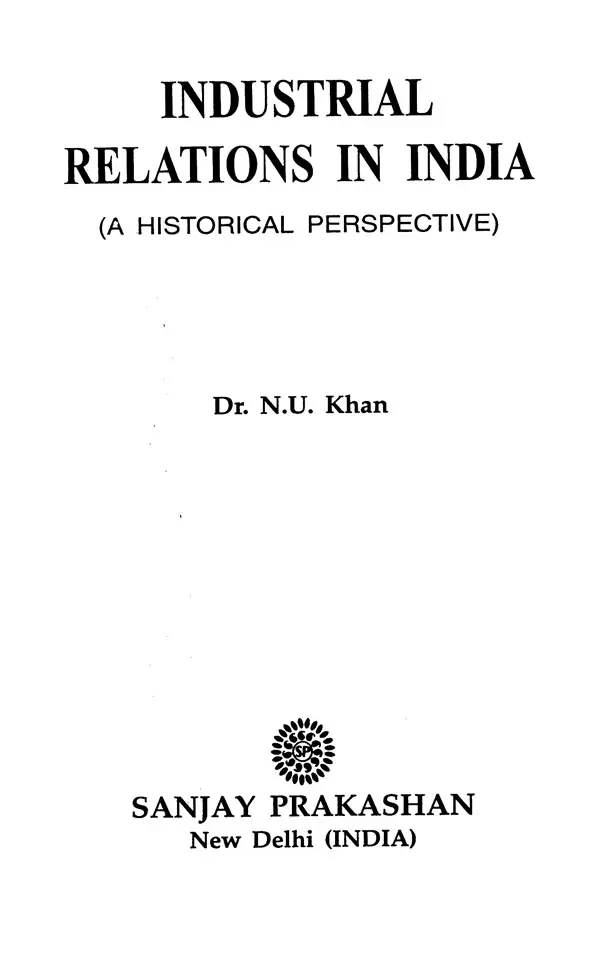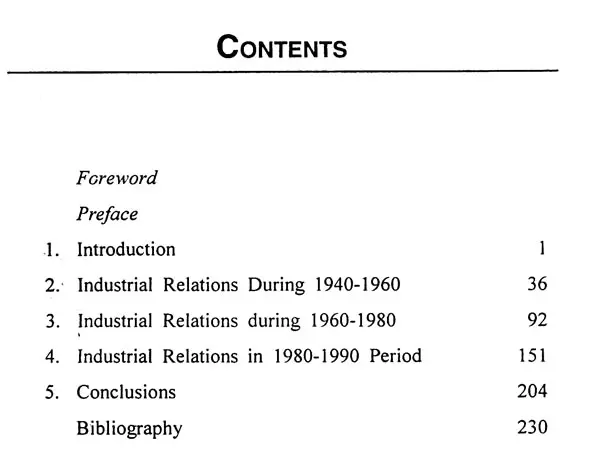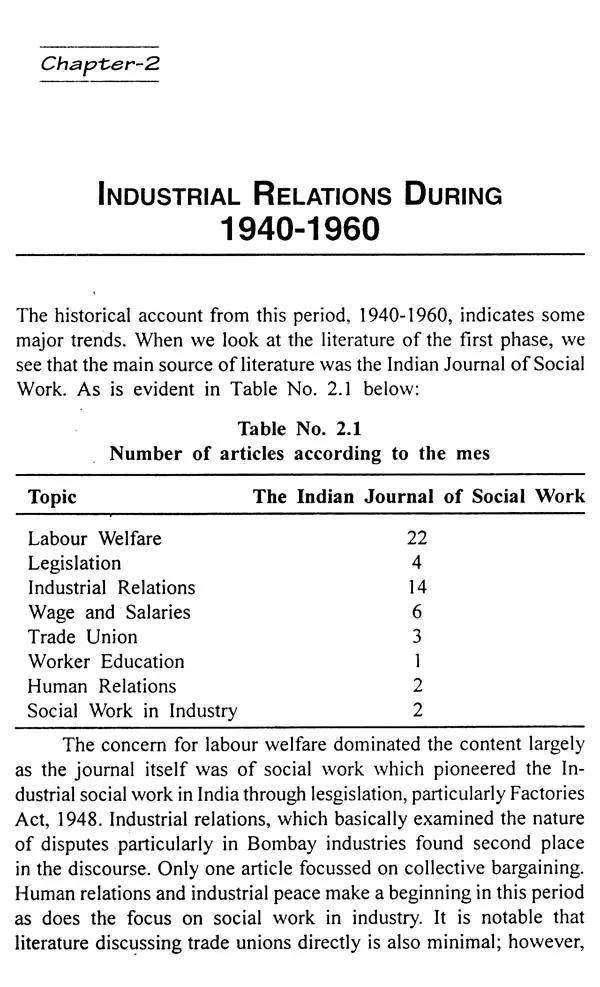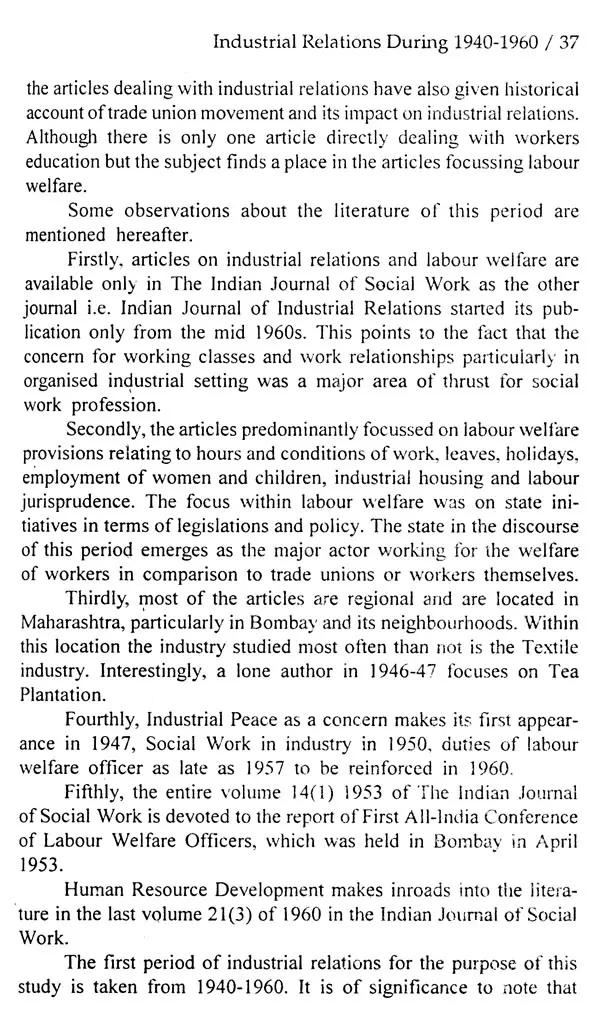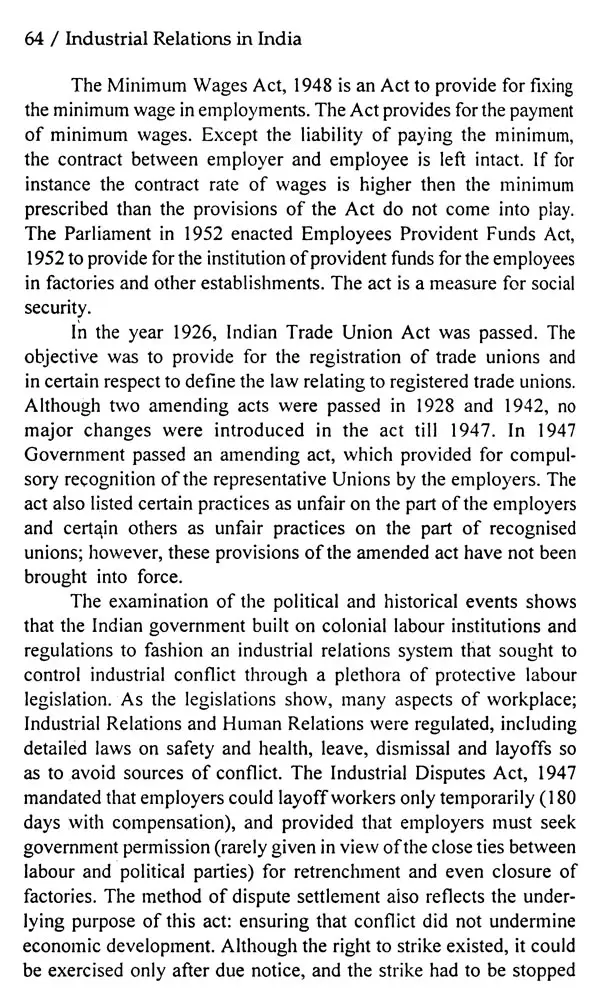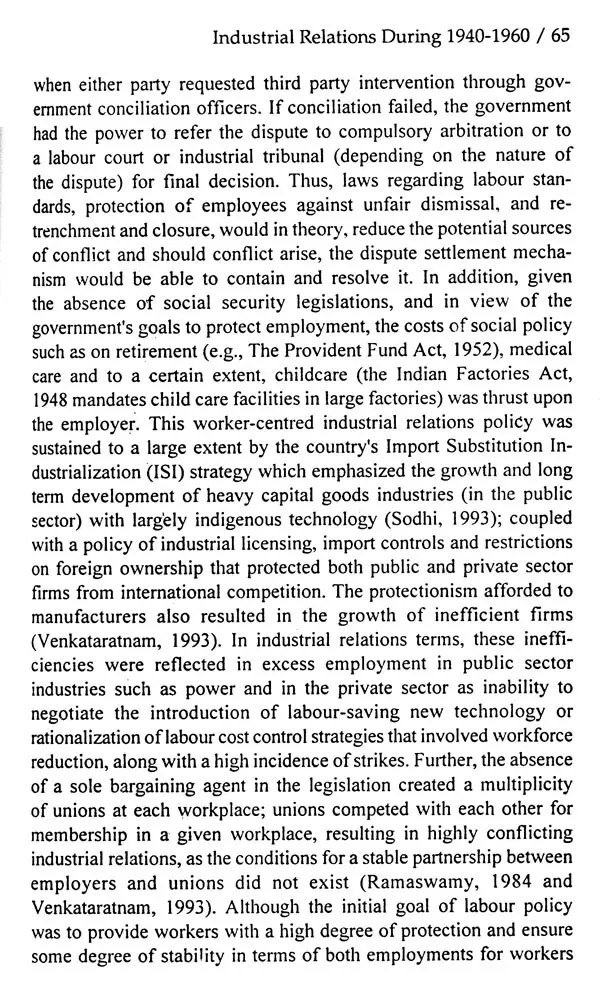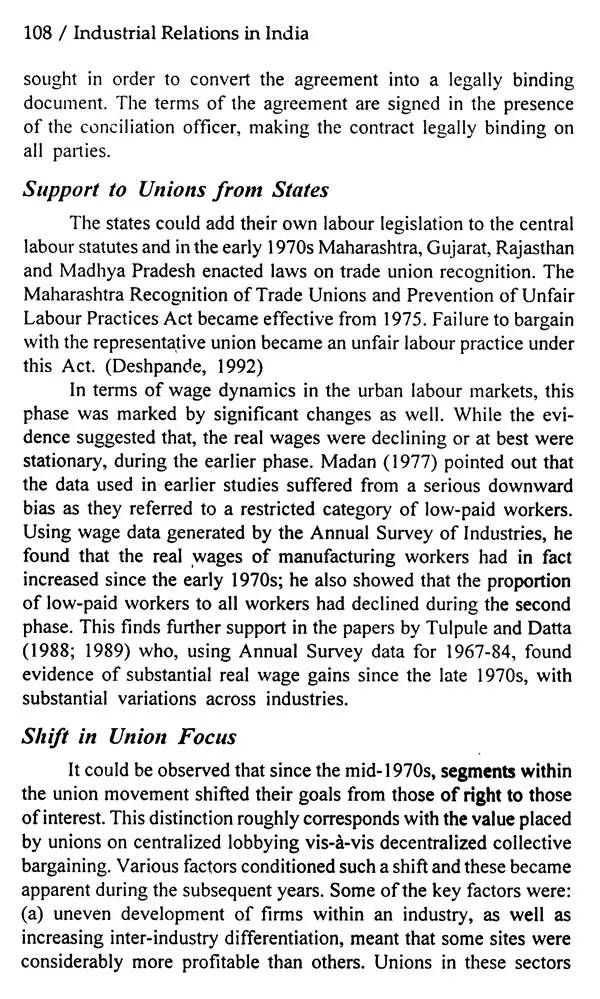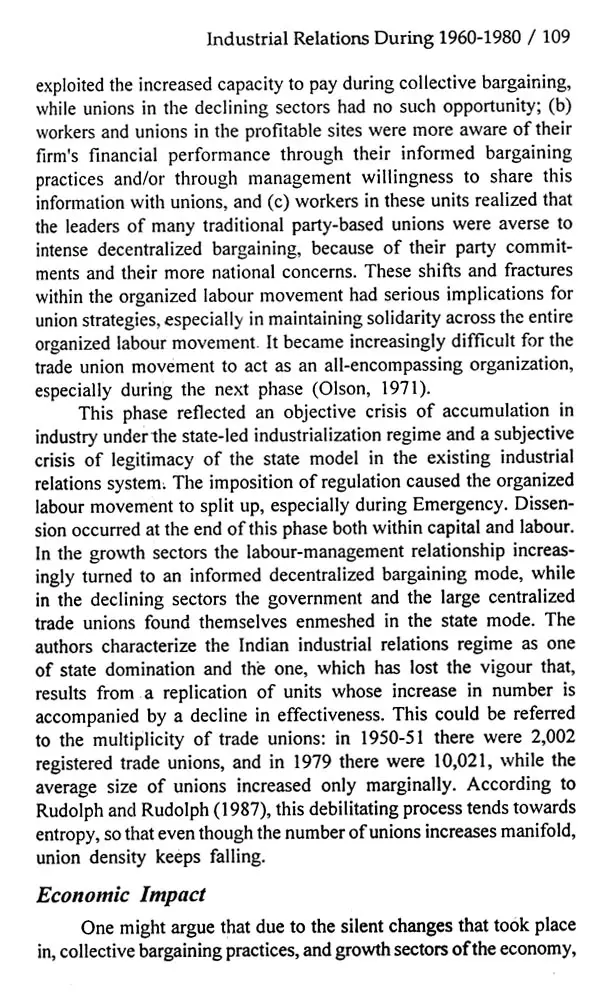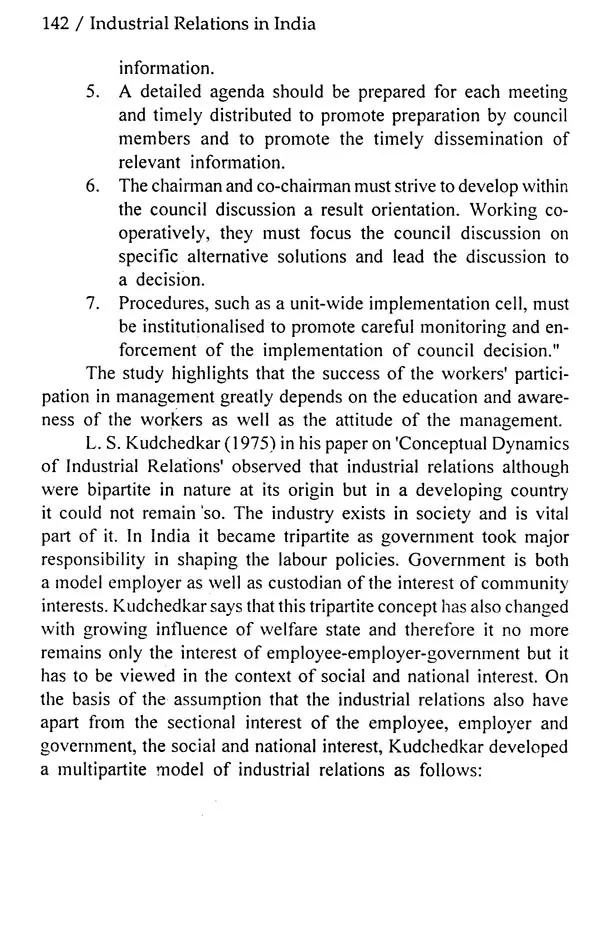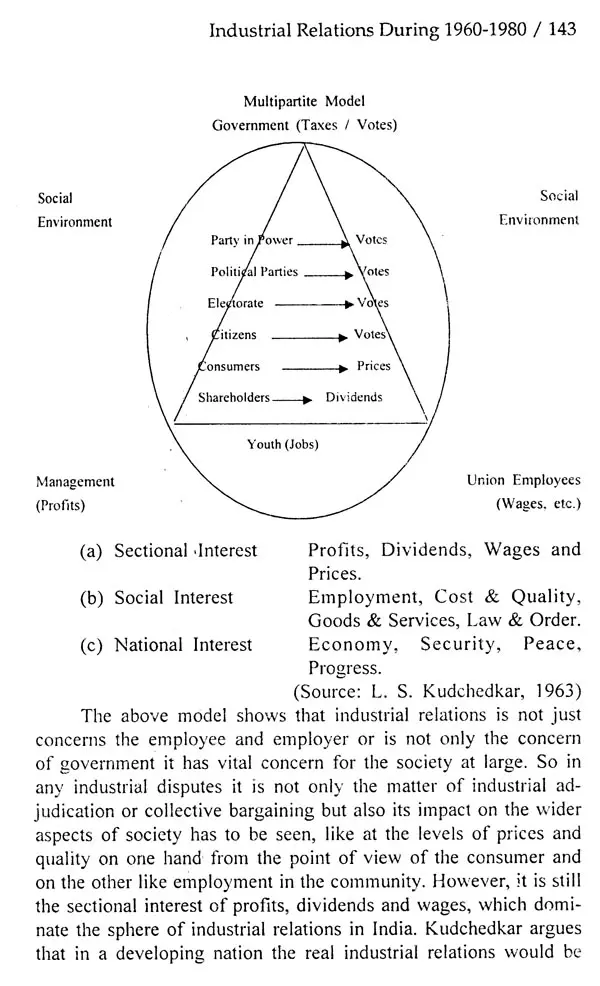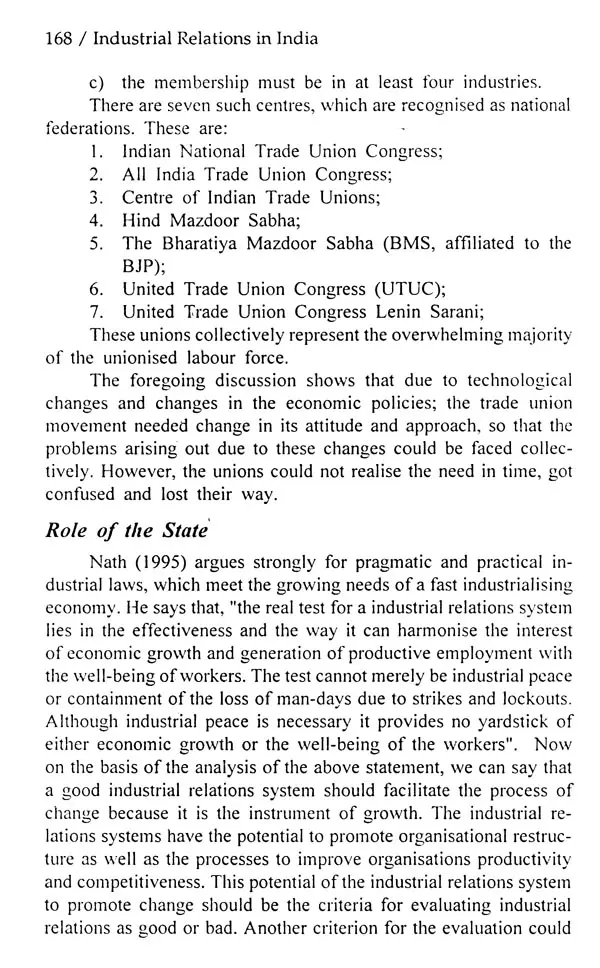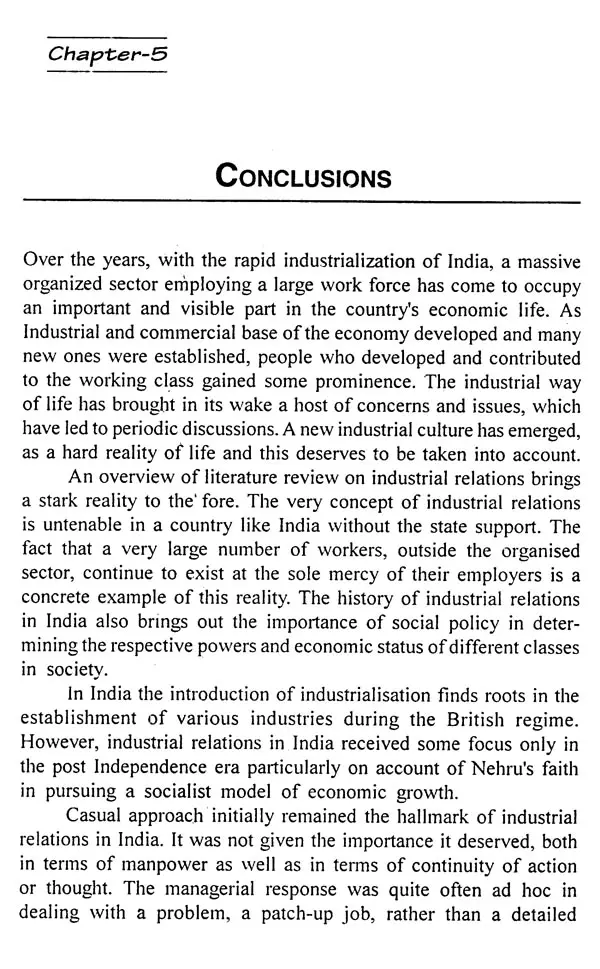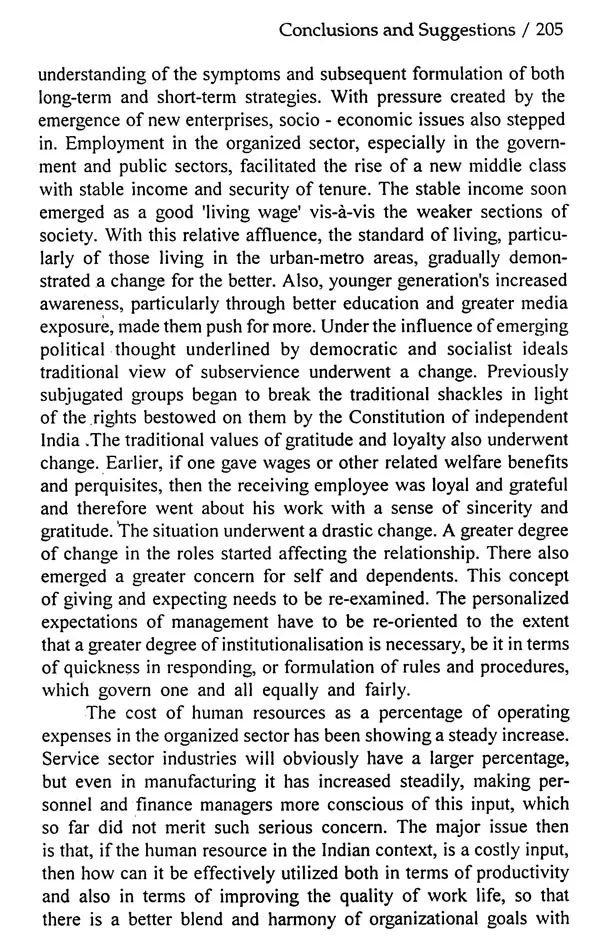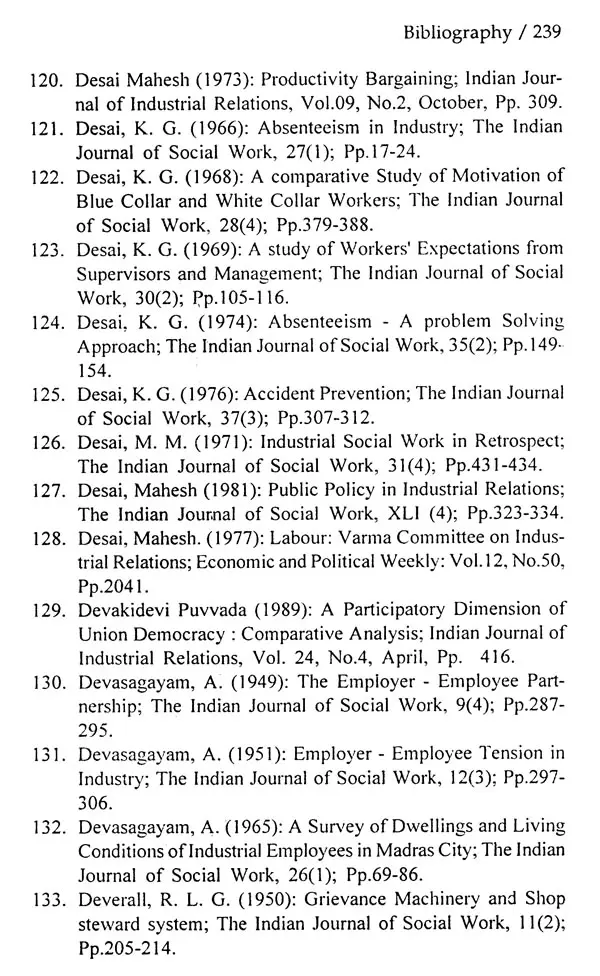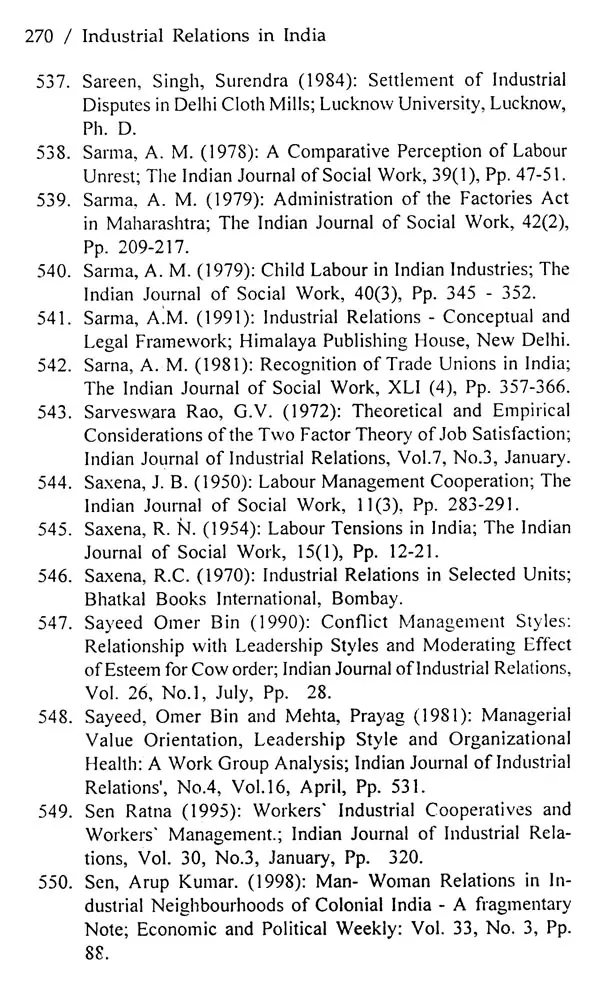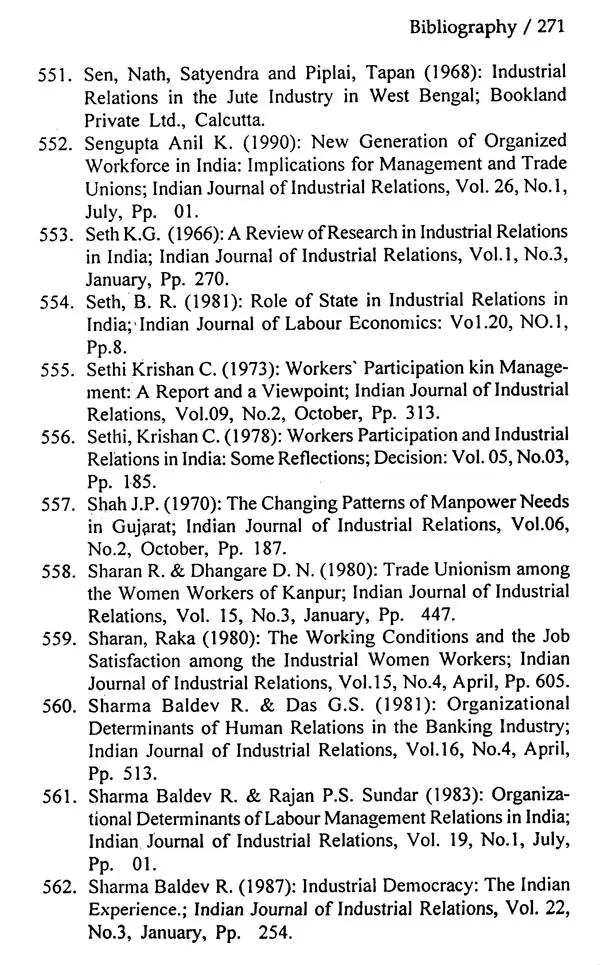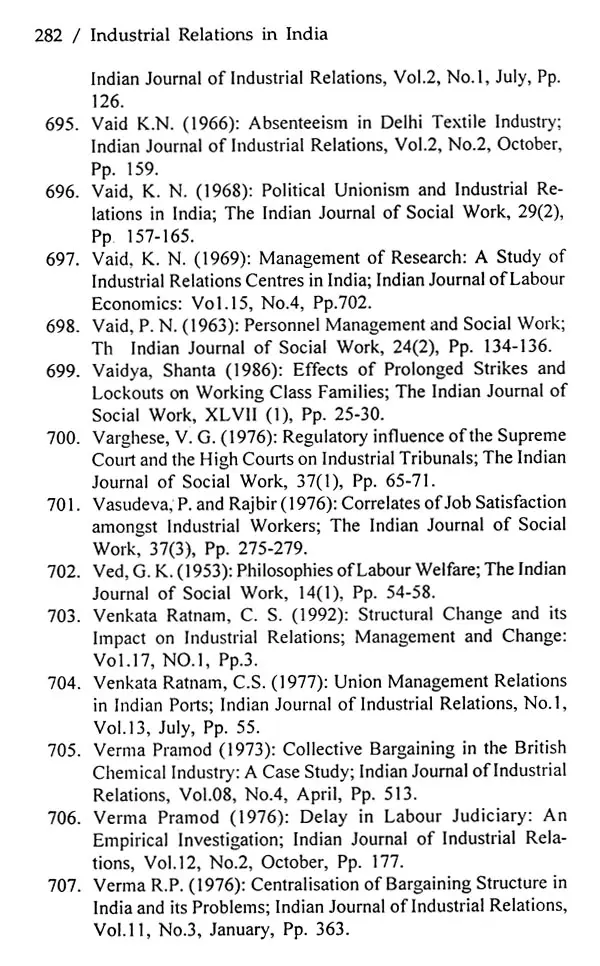
Industrial Relation in India- A Historical Perspective
Book Specification
| Item Code: | UAH828 |
| Author: | N.U. Khan |
| Publisher: | Sanjay Prakashan |
| Language: | English |
| Edition: | 2009 |
| ISBN: | 9788174533180 |
| Pages: | 296 |
| Cover: | HARDCOVER |
| Other Details | 9.00 X 6.00 inch |
| Weight | 450 gm |
Book Description
This book draws on vast volume of literature already available in two leading journals i.e. The Indian Journal of Social Work and Indian Journal of Industrial Relations to draw out the historical content based account of employee relations in India. It is pertinent to mention that the articles of a professional Journal record the major issues and concerns of that period and present a contemporary academic account. This book is well researched and brings out trends and concerns of employee relations in India. Only a mature academician and researcher could have undertaken this feat. I congratulate Dr. N U Khan for having contributed to knowledge building of academicians and practitioners (managers and trade unionists) by undertaking this arduous task of providing indigenous literature on employee relations.
Unlike Western analysis of employee relations based on ideological backgrounds, this account takes realities of Indian situation into account by discussing workers and their organization, role of the state, employer organizations, growth of economy and employer-employee relationship. I accord my appreciation to Dr. N U Khan for having enriched indigenous knowledge in Social Work and Management Practice.
A professional journal's article is an indicator of research productivity in the profession and an important medium of communication for practitioners in a given academic field. A journal is the place where academic community as well as the field practitioners may find updated knowledge considered to be most relevant to the field. The articles published in a professional journal reflect the major concerns and issues at play in the profession. Further, the level of development of knowledge base and practice skill in a profession is determined to a large extent by the quality and theoretical base of articles published in prominent journals of that profession.
This book is based on the articles published in the Indian Journal of Social Work, published by Tata Institute of Social Sciences from Mumbai and Indian Journal of Industrial Relations, published by Sri Ram Centre for Human Recourse Development and Industrial Relations from Delhi. Both these journals are widely referred to by students of social work and management. Hence, it is important to see the trends reflected by them. An attempt to study the trends in employee relations that emerge from the articles on the subject, historically and qualitatively, published in the above-mentioned journals is being done in this book. The trends for the purpose of analysis are seen in the year slabs of 1940 - 1960; 1960 - 1980 and 1980-1990. It is pertinent to mention that during this time period secondary sector dominated the work sphere. Therefore, the nature of employee-employer relationship was addressed to as industrial relations. Keeping this perspective of employee relations in mind, all the articles on industrial relations and allied subjects were selected.
Since the Indian Journal of Industrial Relations started its publications from the middle of 1960s; the first time frame contains the review of articles only from Indian Journal of Social Work.
The total articles published in Indian Journal of Social Work during 1940 - 1990 were 1914, out of which 202 were in the area of issues concerning industrial worker, which is 10.55% of the total articles published, 89 articles were directly related to the area of industrial relations, this is 44.06% of the articles concerning issues related to industrial workers. This shows that high percentage of researchers, in the field of issues related to industrial workers, were concerned with the development of industrial relations in India.
Similarly, in the case of Indian Journal of Industrial Relations, the total number of articles published were 817, out of which 274 were directly related to the field of industrial relations, this comes out to be 33.5% of the total, which again shows that among the authors of this journal, the development of industrial relations in India remained the primary concern. The phase wise descriptions are given in the relevant ·chapters.
Phase - 1 (1940 - 1960): A period generally taken as the beginning phase of Industrial Relations by many authors in the country.
Phase - 2 (1961 - 1980): A period taken as the middle phase of industrial relations in India.
Phase - 3 (Post 1980): A period seen as the turning point in the history of industrial relations in India.
The trends are drawn keeping in mind the objectives and framework of the book, which are summed up on Ideological Background; Trade' Unionism - its growth and development, inter union rivalry, relationship between workers and their organization; Labor legislations and Labor Welfare; Role of state in Industrial Relations i.e. public policy, economic development and labor policy; Employers and their organization, their role and responsibilities; Social work and its role in the development of industrial relations; and Employer - employee relationship.
This automatically brings into focus the importance of industrial society in general and the significance of the relationship between various players active in the sphere of industry in particular. In order to gain an understanding of changes in a society's social and economic 2 / Industrial Relations in India order it becomes imperative to examine the relations among various stakeholders involved in the maintenance of such an order. In the context of industry this relation is popularly known as industrial relations. It is worthwhile to mention that the pre-liberalized era of economy was dominated by Industries and organized industrial workforce. Therefore, pre- nineties was the era of industrial relations rather than employee relations. The dominant trends of employee relations as defined in the context of a white collared workforce found emergence only post New Economic policy implementation i.e. after 1991. The opening of the economy, abolishment of License Raj and the opening of economy to global and capital market led to the gradual disappearance of industrial relations in the discourse to emergence of two new sub-themes i.e. employee relations and labor relations as different entities. In this work we focus on the pre- liberalized era of industrial relations.
In order to understand industrial relations there is a need to develop a conceptual clarity of the same, which emerges by examining the term itself. The term industrial relations consists of two terms i.e. Industrial and relations.
According to the dictionary of personnel management; "Industrial is an adjective referring to industry which refers to manufacturing work" (Ivanovo and Collin, 1993). Industry includes all factories or companies or processes involved in the manufacturing of products.
The term relations means the relations that exist in the industry between the' employer and his workmen. According to dictionary of Sociology (1988) "This phrase covers the employment relation- ship and the institution associated with it. It embraces the relations between workers, work groups, worker organizations and managers, companies and employer organizations". According to the dictionary of Personnel Management (1993), "industrial relations mean relations between management and workers".
Book's Contents and Sample Pages
